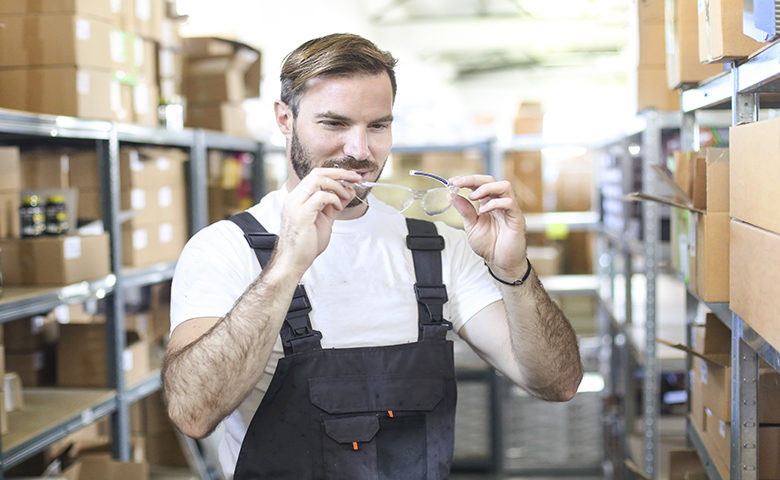Eye protection is a necessity in certain jobs where hazards cannot be completely removed and there are times when PPE will be the only thing protecting workers’ eyes. It’s important to provide workers with eye protection—and it’s also vital to remember that PPE needs to be properly looked after and maintained. This can help ensure that it remains in good condition and keeps protecting the worker for as long as they use it.
Handing workers safety glasses and teaching them when and how to use is not enough. They should also be taught how to look after it because it might be the only thing that stands between them and serious injury.
Inspection
Workers should be in the habit of inspecting their PPE before and after use to look for any holes, punctures and cuts, including embedded foreign objects. Sometimes they might not even be aware that something hit their eye protection as they were working, and an inspection will confirm whether anything has compromised the PPE’s integrity and strength.
People also need to check if the lenses are scratched, pitted, bent or otherwise damaged. Additionally, dirty or scratched lenses may actually lead to injuries by obstructing the wearer’s vision.
It’s also important to inspect eye protection for signs of general wear and tear like fraying, discoloration, hardening, flaking, swelling and stickiness. If the eye protection displays signs of age or overuse, it’s time to replace it. The same is true if the frames of safety glasses are bent and if the headbands in goggles are knotted, loose or compromised in any other way.
Eye protection can last a long time or it can be compromised within a week of its purchase. Workers should always keep spare PPE available in case the eye protection they’re wearing gets damaged on the job and the backup PPE is suddenly required.
Care and maintenance
When teaching workers how to use their PPE correctly, they should also be instructed on the proper methods of care and maintenance. For example, they need to know to clean safety glasses and goggles with mild soap and water. To avoid scratching, workers should blow the dust off the lenses (or, ideally, use water instead) before wiping them. They should also read and follow the manufacturer’s instructions regarding the care of their equipment.
When it comes to storing PPE, employees need to be aware that proper storage will protect their equipment and extend its life. Conversely, any weakness in the material caused by improper storage can one day lead to it failing to perform its job.
Eye protection should be stored in its own case (which should obviously be clean and free of debris or dust). Failing that, keep it in a safe place where it won’t get scratched, bent, hit by other objects or damaged in another way. Even a shelf of a locker will do as long as it fulfills the above criteria.
Safety culture
When incorrectly cared for or used after it’s been damaged, eye protection can sometimes give the workers a false sense of security—they’ll keep using it even when it’s defective and no longer provides sufficient protection.
The right attitude towards eye protection should be instilled in all workers through a healthy safety culture. It helps them realize that PPE is their last line of defense against serious injuries, infections or even losing an eye. Wearing—and caring for—safety glasses, face shields and other PPE is an essential part of keeping people’s eyes safe. And proper care and storage can ensure an efficient and effective functioning of the equipment, potentially saving someone’s eyes.
Inspection, care and maintenance of protective eyewear doesn’t take much time or skill once the habit has been established. However, building any habit takes time, regular communication and coaching by supervisors and colleagues until the daily routine is established and everyone does it automatically.
To maximize the benefits of this initial habit-building effort, you could tie in a key safety message or activity as part of the process. This could turn eyewear-handling procedures into keystone habits like getting people to think about risk before they start or leave work. It could also be a culture-building exercise in itself, like getting everyone to inspect together at pre-shift briefings or toolbox talks so everyone understands that safety is a priority before work begins.

